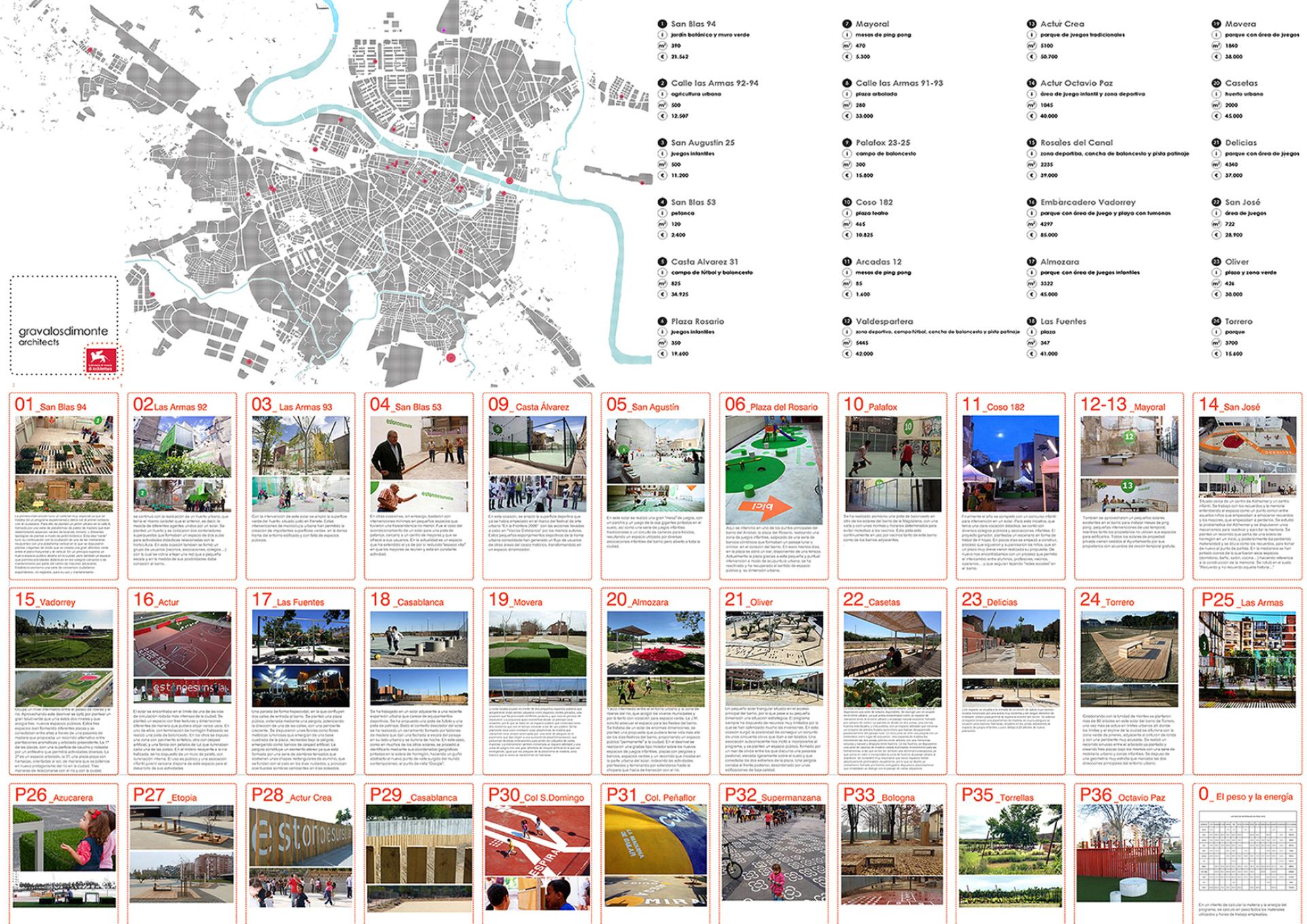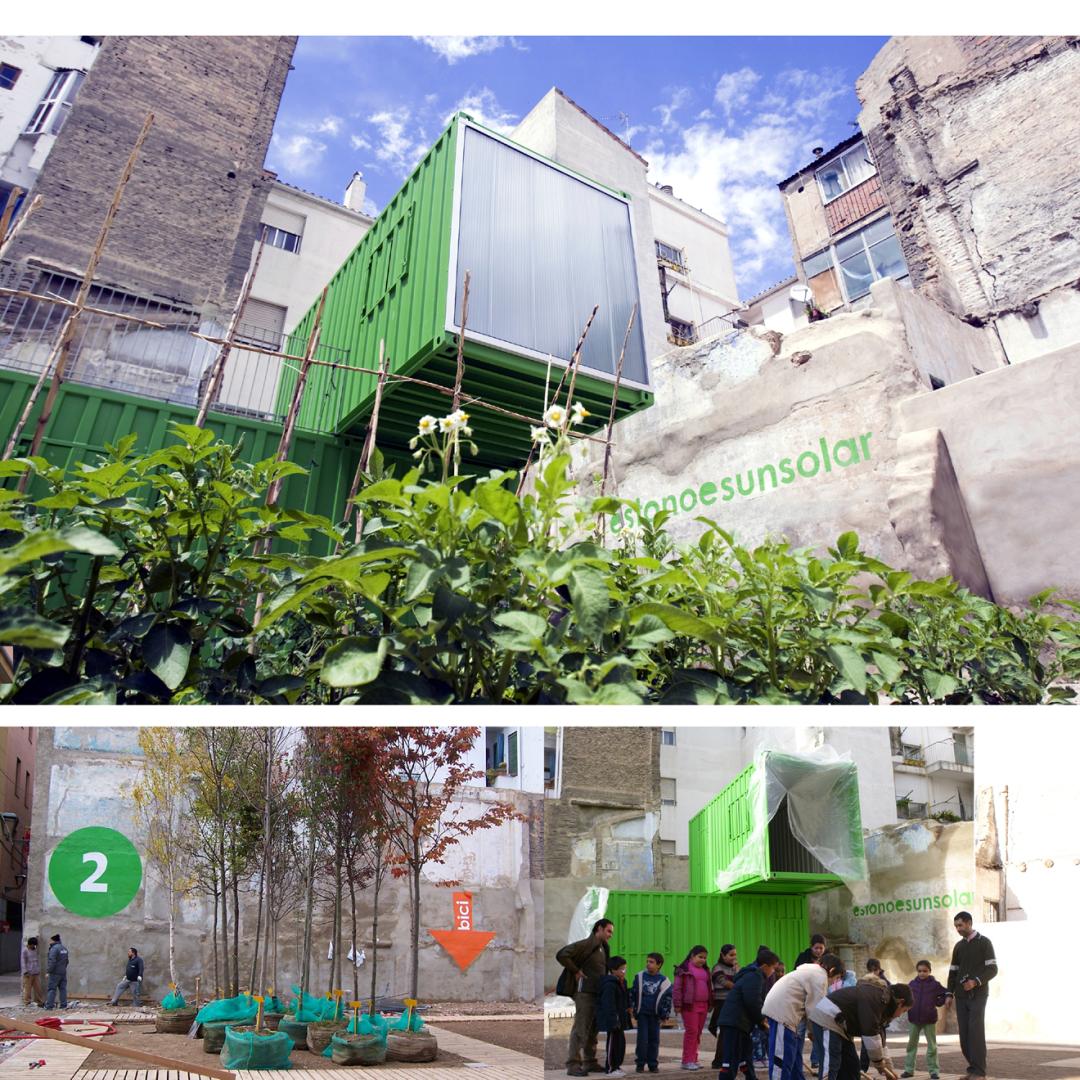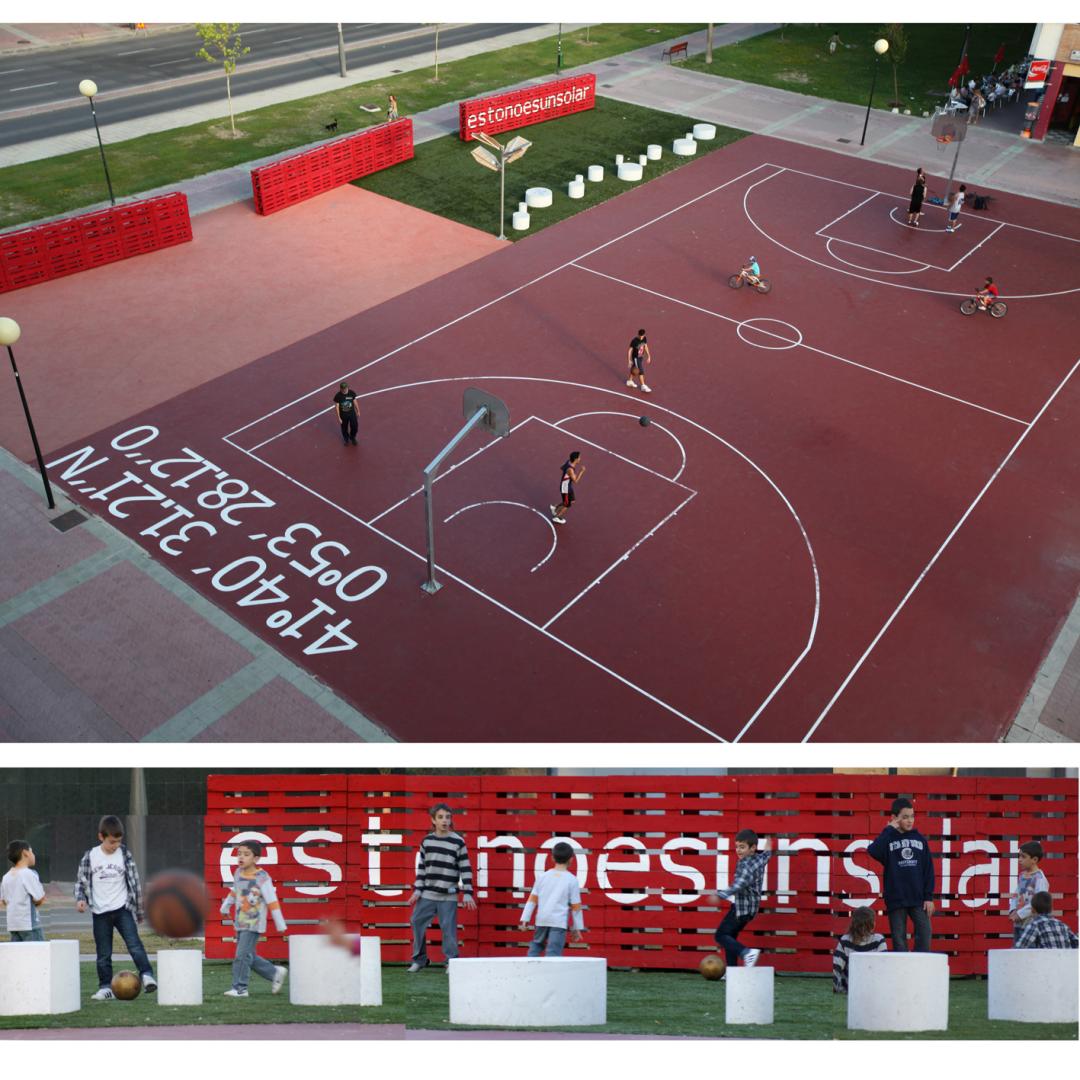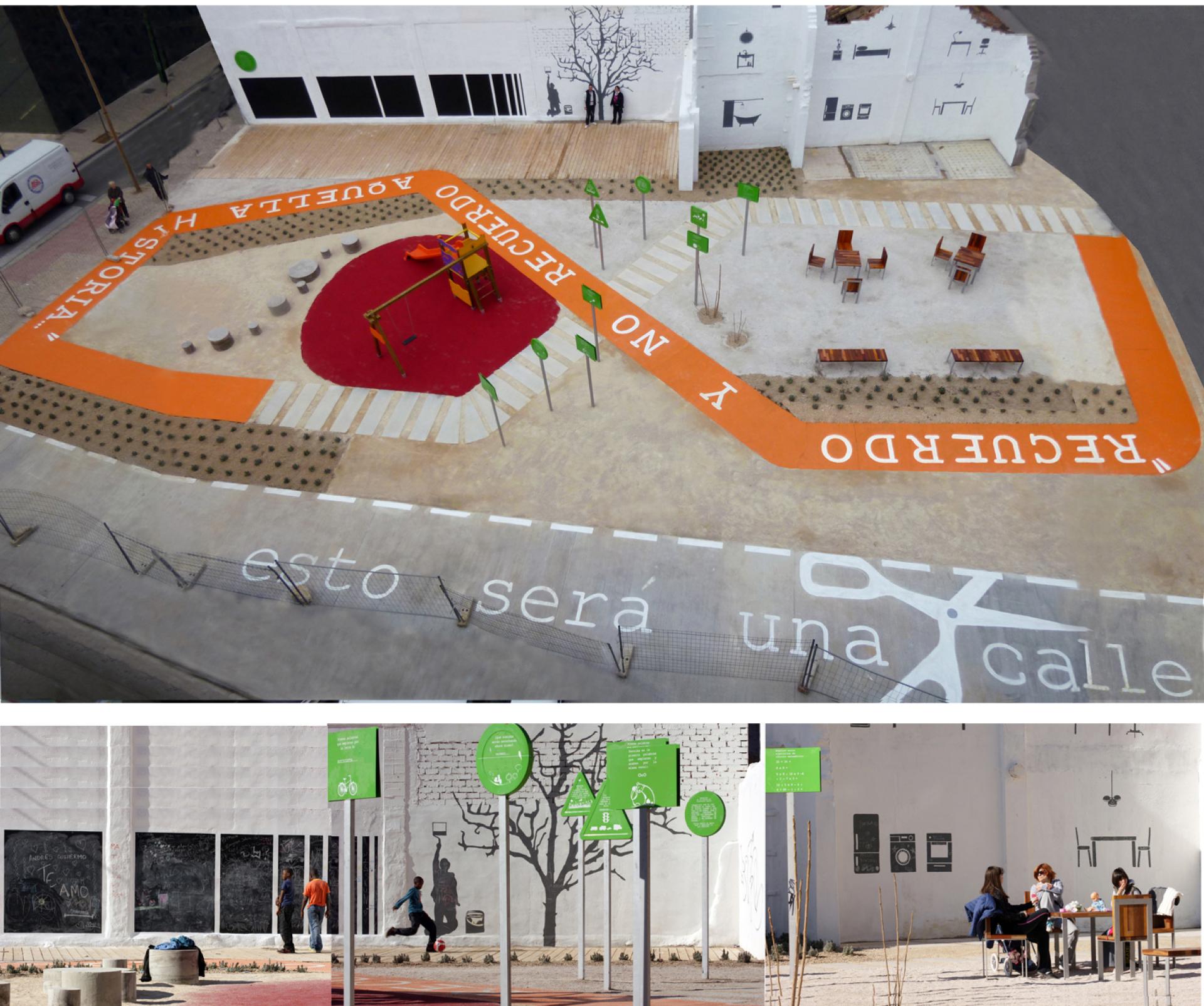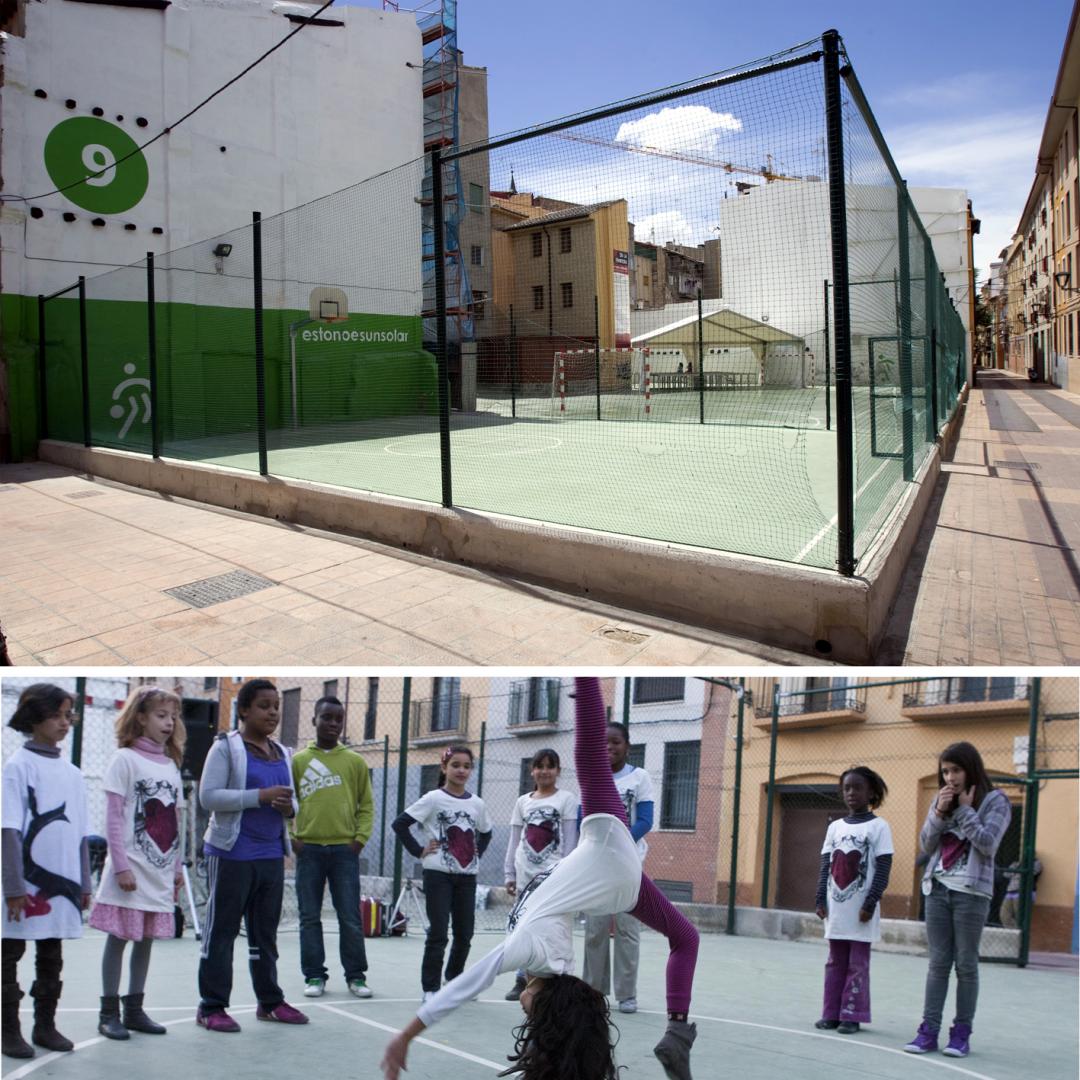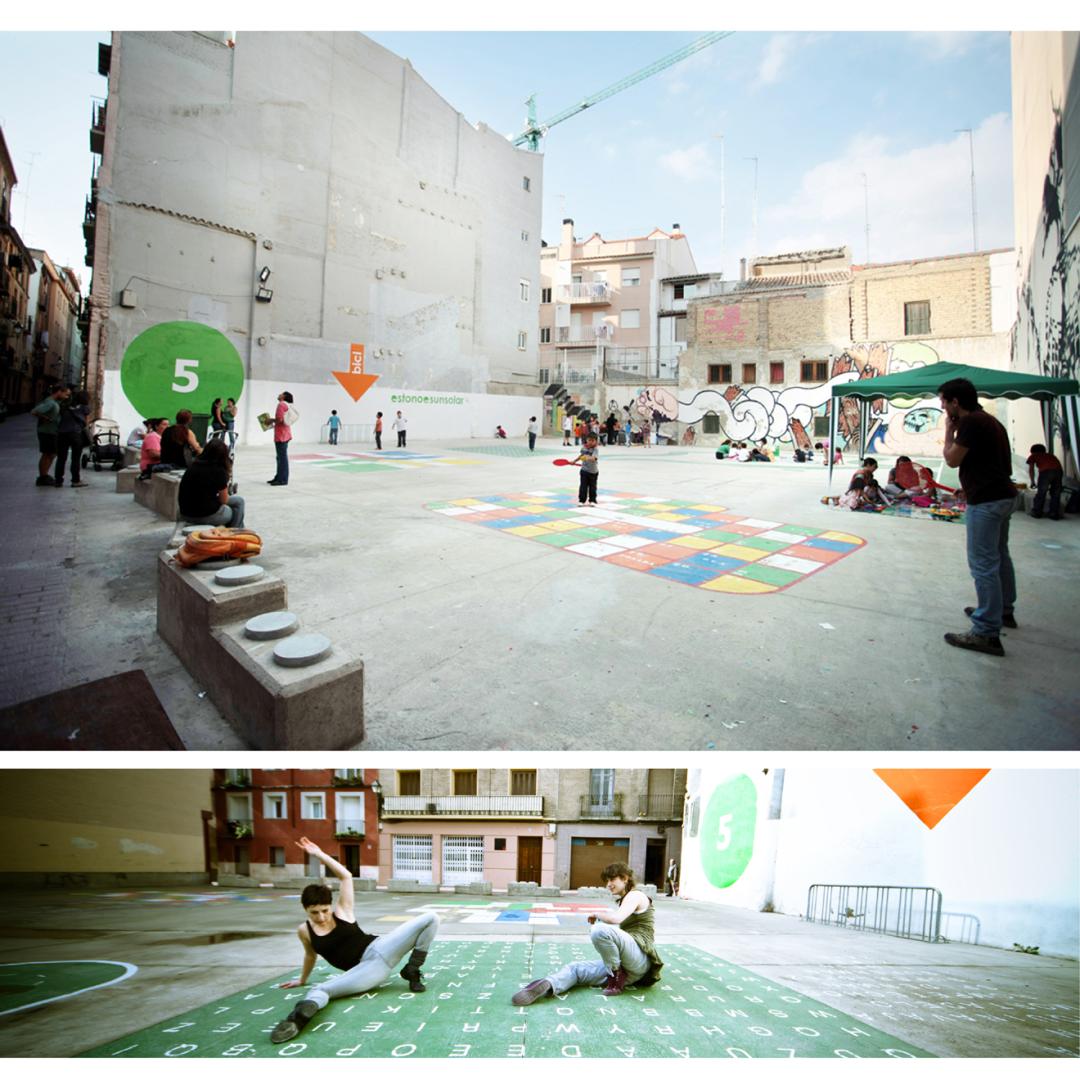Estonoesunsolar
Basic information
Project Title
Full project title
Category
Project Description
Estonoesunsolar is an experimental program to reactivate unused spaces in temporary public facilities. In Zaragoza 40 interventions are a new dinamic variable of a human scale city. Those abandoned spaces now represent the latent possibility of rescheduling the existing city, dealing the future with a more sustainable and inclusive criteria. Each plot is transformed in a temporary public space, meets a local demand, is co-designed and co-managed by local associationn
Project Region
EU Programme or fund
Description of the project
Summary
The "estonoesunsolar" programme arose as an employment project to clean up abandoned, run-down vacant plots in Zaragoza’s historical centre, aimed at the long-term unemployed. With this as a starting point, the idea was suggested of creating a series of proposals that allowed for provisional occupation of the plots, providing a number of temporary public uses, in order to make full use of them.These dynamic, changing “new spaces” provide a fresh reading for the city and public spaces. Each plot contains an idea, and constitutes a privileged place.There have been built children’s play areas, a giant ludo board, a tricycle racetrack, urban vegetable gardens, a green garden-carpet, a forest, a basketball court, a volleyball court, a place to play petanque, a ping-pong area and a football pitch.The employment plan, which arose in order to clean up plots, has been transformed into the creative “estonoesunsolar” programme for recycling empty urban spaces through low cost actions and citizen participation.Within this framework and with a clear educational intent, a series of workshops was organised, in collaboration with the city’s state schools and children’s associations, with the aim of bringing architecture closer to children from five to twelve years old, making them participate in the planning and construction of the city. Each group came up with a proposal to transform a site into a public space. The children produced texts, drawings and models, and proposed solutions to adapt an empty plot. Finally, a jury chose the winning proposal, which the “estonoesunsolar” team built as closely as possible.As well as the children, the general public also put forward proposals, thus promoting involvement and civic participation in the project.
Key objectives for sustainability
The recuperation of empty spaces that are getting run down, by transforming them into public spaces for temporary use that can help to meet the many demands and wishes of the neighbourhood.
- The incorporation of unemployed people into the world of work, so that they can use their experience to help the programme, while enriching themselves through knowledge learnt from the whole team.
- The vocation for training and education, with the collaboration of a number of state schools and children’s associations.
- The desire to find areas of agreement between a number of varied points of view, finally coming together on the same path, through complex negotiations.
- Civic involvement represented by neighbours’ associations, children’s centres, schools and public organisations, with the encouragement and support of the Municipal Society of Zaragoza Vivienda and the administration of the Zaragoza Municipality.
Key objectives for aesthetics and quality
The programme success can be measured in the interest that - ten years after its conception and first implementations - this experience continues arousing in different cities, Universities, Forum and multiple European projects and, more generally, in the disciplinary debate on the recovery and reuse of empty spaces, both in urban or rural context, being one of the most succesfull and imitated example of urban regeneration operations based on the public space project.
Far from being reduced to an operation of simple design and temporary set-up of some vacant lots in the consolidated city or in interstitial and marginal spaces in some areas of more recent urbanization, "Estonoesunsolar" is to all intents and purposes an experimental program in which objectives of different nature coexist (finding a happy synthesis), to pursue which relevant problems are faced from different perspectives, and intelligent and effective technical solutions are developed.
Key objectives for inclusion
Citizens involvement is present in all aspects of this program, since all new public spaces are co-designed as a fundamental contribution that the dwellers made to communicate their needs and concerns during development, being an employment plan that provides new jobs to people who are unemployed and with a high leve of social exclusion. Its ultimate use different sensibilities agrees and apparently contradictory. The 40 new facilities, are co-designed and co-maged by more then 60 citizens associations, schools, eldierly centers, with the aim of creating a network among different groups of citizens. The process ensures that the transformed plots exactly meet the requirements of the local residents. So far, empty plots have been transformed to create children’s playgrounds, basketball courts, urban gardens and squares. The project has the added benefit of not only turning out new urban social, educational and creative spaces, but also bringing citizens from different backgrounds together to determine the future of their neighbourhoods.
Results in relation to category
A few years ago the architects who created the program began a series of studies and proposals on the Old Town of Zaragoza in which they tried to transfer to public institutions the great possibilities offered by the current voids (lots and unused buildings) of the urban fabric, degraded or in edge situations, to offer a new vision of the city and recover the latent energy in many forgotten spaces. These proposals, after some first artistic interventions in plots, subsequently gave rise to the "estonoesunsolar" program, which proposed a new look at these spaces ("this is not a plot, this is not what it seems, look at it with different eyes"). It was an invitation to think again, to imagine possible content and propose new situations. The actions consisted of the temporary use of plots, highlighting the suggestion of the void, the gap and the invisible. These temporary expansions of the consolidated fabric allowed an alternative, flexible and dynamic reading of the public space. The interventions have been possible thanks to the involvement of neighborhood associations, as well as the commitment of the Municipal Society of Zaragoza Vivienda financing the program. The proposals are based on a study of both urban and socio-economic issues, of the deficiencies in each area, the spaces claimed and the population to which they are intended. Play areas for children, urban gardens, forests, sports courts, bowls, ping pong tables, parks, squares have been made, placing bicycle parking spaces in each space. Every intervention is subsequently managed by local associations (children, youth, sports, seniors) or any citizen group interested in its use. Each space is a neighborhood desire in the face of the "unreasonable silence of the world."
How Citizens benefit
This close involvement from citizens has ensured that the project’s reception has been very positive. It has created new meeting points for residents and developed more of a community atmosphere in the city. In fact, the popularity of the initial stages of the project led to many other city districts demanding to have their empty and abandoned spaces recovered. In response, the city doubled the project budget and opened it up to the whole of Zaragoza rcovering more then 60.000 m² of nue facilities, in 15 districts of the city, engaging over 60 associations. One of the most exciting aspects of the program is the will to agree different and seemingly contradictory sensitivities. Different actors and complex relationships converge at each urban plot. The proposed uses are public. This has involved a mix of different sensibilities that have been ultimately headed in one direction, through complex and intricate agreements with each owner. In addition, all interventions have been the result of the involvement of neighborhood associations, nurseries, schools etc, and the momentum of Zaragoza Municipality that has managed the program.
Innovative character
The “estonoesunsolar” program works araises from the vacuum, both physical, social, and legislative. Finds a meaning in the silence, and an opportunity in the absence. It is not based on the built fact, but establishes a symbolic landscape supported by social processes. Explores the void as a possibility, as a flexible, mutable and reversible container. For this reason, proposes a weightless, inclusive language, in which the traces of what exists continue having a symbolic presence of everything that has happened there. Therefore, is intended an architecture that preserves the void by relying on its ability to bind. In this symbolic sense, the city is interpreted as a psychic landscape that contains infinite possible cities in its voids (Careri, 2006). And in this random stroll, citizens create meanings, develop complicities with the place and therefore establishe links with the territory.

